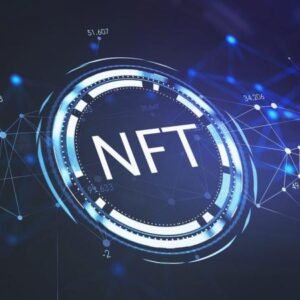Introduction: Seeing Beyond the Price Chart
In the chaotic and fast-moving world of cryptocurrency trading, price charts have always been the traditional compass for most traders. But the smartest crypto traders—the ones who consistently outperform the market—don’t just follow charts. They go beneath the surface and rely on on-chain analysis to gain real-time insights into blockchain data, detect market shifts early, and spot undervalued tokens before they catch the crowd’s attention.
This practice is no longer reserved for coders or blockchain engineers. With tools becoming more accessible and intuitive, on-chain analysis is now an essential part of any serious trader’s toolkit. In this article, we’ll break down exactly how seasoned crypto traders leverage on-chain data to find value, outsmart the market, and buy low before tokens pump.
What is On-Chain Analysis?
On-chain analysis is the process of examining blockchain data to understand investor behavior, network activity, and the overall health of a crypto asset. Unlike technical analysis (which focuses on historical price trends) or fundamental analysis (which examines project vision and team strength), on-chain analysis dives directly into the raw data written to the blockchain.
This includes metrics like:
- Wallet activity (new addresses, active wallets)
- Token transfers
- Exchange inflows/outflows
- Gas fees and transaction volumes
- Smart contract interactions
- Whale movements (large holders accumulating or dumping)
With this data, traders can gain unmatched visibility into market sentiment, token utility, and potential price action—all before the market reacts.
Exploreon−chaindatausing[Glassnode](https://glassnode.com)or[IntoTheBlock](https://www.intotheblock.com/).Explore on-chain data using [Glassnode](https://glassnode.com) or [IntoTheBlock](https://www.intotheblock.com/).
Why On-Chain Analysis is a Game-Changer
On-chain analytics provides an edge that traditional charting simply can’t match. Here’s why:
- Transparency: Blockchains are open ledgers. Every transaction is visible to anyone with the right tools.
- Early Indicators: You can often see accumulation trends, developer activity, or exchange outflows before price movement follows.
- Market Sentiment: Data like active addresses or transaction count reflects real usage and hype.
- Avoiding Hype: On-chain data cuts through speculation and influencer noise, helping traders focus on facts.
This[CryptoQuantguide](https://academy.cryptoquant.com/)explainsmoreaboutbehavioralmarketsignals.This [CryptoQuant guide](https://academy.cryptoquant.com/) explains more about behavioral market signals.
How Smart Traders Use On-Chain Metrics
Let’s break down some of the most effective on-chain metrics and how savvy traders use them:
1. Active Addresses
A consistent increase in active addresses often signals growing adoption. If the number of users interacting with a token rises while the price stays flat, it can indicate that the token is undervalued.
Example:Accordingto[Santiment](https://santiment.net/),asurgeinEthereum′sactiveaddressesinearly2020foreshadoweditsexplosive2021rally.Example: According to [Santiment](https://santiment.net/), a surge in Ethereum’s active addresses in early 2020 foreshadowed its explosive 2021 rally.
2. Exchange Flows
Watching the flow of tokens to and from exchanges is crucial. If large amounts are being withdrawn to private wallets, it may signal accumulation and reduced selling pressure.
- Outflows > Inflows = Bullish
- Inflows > Outflows = Bearish
Checkout[Nansen](https://www.nansen.ai/)forwallet−trackingandexchangeflowanalysis.Check out [Nansen](https://www.nansen.ai/) for wallet-tracking and exchange flow analysis.
3. Whale Accumulation
Smart traders track wallets with large holdings (“whales”) to follow the money. When whales accumulate a token, it often precedes a rally.
Use[Lookonchain](https://twitter.com/lookonchain)forreal−timewhalewatching.Use [Lookonchain](https://twitter.com/lookonchain) for real-time whale watching.
4. Network Value to Transactions (NVT) Ratio
NVT = Market Cap / Daily Transaction Volume
A high NVT suggests a token is overvalued relative to its utility, while a low NVT may point to undervaluation.
Key On-Chain Metrics Comparison Table
| Metric | What It Measures | Why It Matters | Interpretation |
|---|---|---|---|
| Active Addresses | User participation | Indicates adoption and demand | High = bullish signal |
| Exchange Inflows/Outflows | Token movement to/from exchanges | Suggests intent to sell (inflows) or hold (outflows) | Outflows > Inflows = Bullish |
| Whale Accumulation | Buying behavior of large holders | Signals confidence from informed investors | Accumulation = Bullish |
| NVT Ratio | Value vs actual usage | Helps spot over/undervalued assets | Low = undervalued |
| Gas Fees & Txn Volume | Network activity | Reflects real-world utility | High = strong utility |
Real-Life Example: Finding a Hidden Gem with On-Chain Data
Let’s say you’re researching a relatively unknown DeFi project: TokenX. On the surface, price charts show no major activity. But you notice:
- Active wallets up 150% in a month
- Exchange outflows spiking
- Whales accumulating steadily
- Gas usage on its smart contracts rising
Price hasn’t moved yet, but on-chain data suggests something is brewing. These are the setups smart traders wait for. They quietly build a position while the market sleeps—and reap rewards when the crowd catches on.
A similar pattern was spotted by [Messari](https://messari.io/) during the early phase of the $AAVE token.
Tools Smart Traders Rely On
You don’t need to be a blockchain developer to access this data. Here are top tools:
- Glassnode: For macro and micro on-chain data across BTC, ETH, and altcoins
- Nansen: For wallet analysis and token flow tracking
- Dune Analytics: Custom dashboards from on-chain SQL queries
- CryptoQuant: Exchange flows, miner behavior, and more
- Santiment: Market sentiment and activity tracking
Implications of On-Chain Mastery
- Early Entry = Bigger Gains: By spotting demand shifts early, traders can enter before price spikes.
- Better Risk Management: You’re not betting on hype, but on measurable activity and adoption.
- Market Neutral Strategies: Even in bear markets, identifying accumulation patterns can yield gains.
- Confidence in Holding: When the chart dips but on-chain data remains strong, conviction stays high.
Exploreon−chainanomaliesthrough[TokenTerminal](https://tokenterminal.com/)tovalidateprojectrevenue.Explore on-chain anomalies through [Token Terminal](https://tokenterminal.com/) to validate project revenue.
Challenges and Limitations
- Data Overload: Without focus, you can drown in metrics. Stick to a few key ones.
- Lag Time: Sometimes the market doesn’t react immediately, requiring patience.
- False Signals: Not all whale movements are bullish. Context matters.
Final Thoughts: Stay Ahead of the Herd
In a market driven by speculation, hype, and volatility, being right early is everything. On-chain analysis gives smart traders the roadmap to do just that. It brings clarity, confidence, and a clear edge over those relying only on price action and social media noise.
As tools improve and adoption spreads, expect on-chain analytics to become as common as candlestick charts. But until then, early adopters of this discipline have the advantage—one that can make all the difference between average returns and market-beating gains.
Wanttostartnow?This[Dunebeginnerguide](https://dune.com/docs)isagreatstartingpoint.Want to start now? This [Dune beginner guide](https://dune.com/docs) is a great starting point.
Ready to start scanning the blockchain for opportunity? Don’t wait for headlines. Let data lead you.






